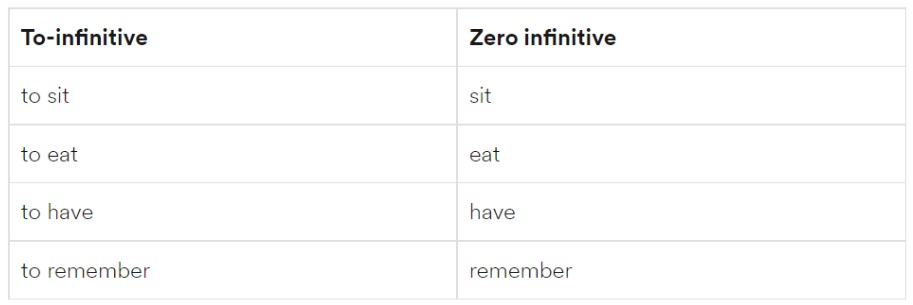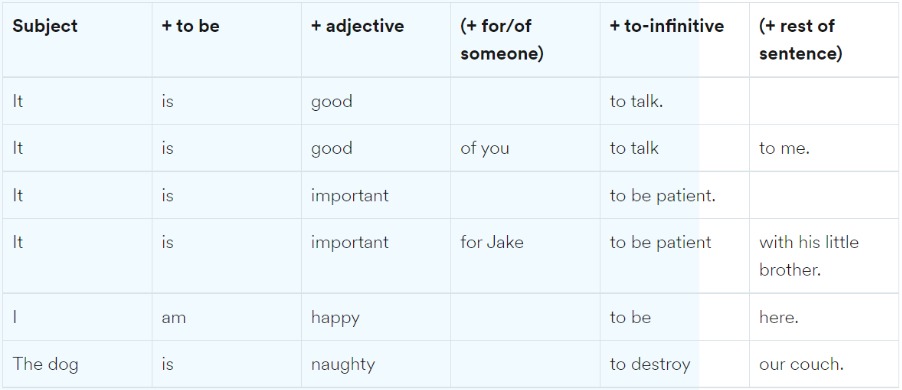THE INFINITIVE for Class 10 ENGLISH
THEME
Infinitive: The basic form of a verb, without an inflection binding it to a particular subject or tense.
इनफिनिटिव: क्रिया का मूल रूप, बिना किसी विभक्ति के इसे किसी विशेष विषय या काल से बांधता है।
EXPLANATION
Forming the infinitive:The infinitive is the base form of a verb. In English, when we talk about the infinitive we are usually referring to the present infinitive, which is the most common. There are, however, four other forms of the infinitive: the perfect infinitive, the perfect continuous infinitive, the continuous infinitive, & the passive infinitive.
इनफिनिटिव बनाना:इनफिनिटिव क्रिया का मूल रूप है। अंग्रेजी में, जब हम इनफिनिटिव के बारे में बात करते हैं तो हम आमतौर पर वर्तमान इनफिनिटिव का जिक्र करते हैं, जो कि सबसे आम है। हालांकि, इनफिनिटिव के चार अन्य रूप हैं: परफेक्ट इनफिनिटिव, परफेक्ट कंटीन्यूअस इनफिनिटिव, कंटीन्यूअस इनफिनिटिव, और पैसिव इनफिनिटिव।
The present infinitive has two forms:
प्रेजेंट इनफिनिटिव के दो रूप हैं:

The negative infinitive is formed by putting 'not' in front of any form of the infinitive.
Examples
नेगेटिव इनफिनिटिव, इनफिनिटिव के किसी भी रूप के सामने 'नहीं' डालने से बनता है।
उदाहरण
TYPES OF INFINITIVE
Functions of the to-infinitive
The to-infinitive is used in many sentence constructions, often expressing the purpose of something or someone's opinion about something. The to-infinitive is used following a large collection of different verbs as well.
The 'to'-'infinitive' to indicate the purpose or intention of an action.
In this case 'to' has the same meaning 'as in order to' or 'so as to.'
Examples
The to-infinitive as the subject of the sentence.This is a formal usage and is far more common in written English than spoken.
Examples
टू-इनफिनिटिव के कार्य
टू-इनफिनिटिव का उपयोग कई वाक्य निर्माणों में किया जाता है, जो अक्सर किसी चीज़ के उद्देश्य या किसी चीज़ के बारे में किसी की राय व्यक्त करते हैं। विभिन्न क्रियाओं के एक बड़े संग्रह के बाद भी इनफिनिटिव का उपयोग किया जाता है।
किसी क्रिया के उद्देश्य या इरादे को इंगित करने के लिए 'टू-इनफिनिटिव' का उपयोग होता है
इस मामले में 'करने के लिए' या 'के रूप में करने के लिए' का एक ही अर्थ है।
उदाहरण
टू-इनफिनिटिव वाक्य के विषय के रूप में। यह एक औपचारिक उपयोग है और लिखित अंग्रेजी में कहीं अधिक आम है बोलने से ज्यादा।
उदाहरण
EXAMPLES
The to-infinitive to indicate what something can or will be used for
In this pattern, the to-infinitive follows a noun or pronoun.
Examples
The to-infinitive after adjectives
There is a common pattern using the to-infinitive with an adjective. These phrases are formed:
subject + to be + adjective + (for/of someone) + to-infinitive + (rest of sentence)
टू-इनफ़िनिटिव यह इंगित करने के लिए कि किसी चीज़ के लिए क्या उपयोग किया जा सकता है या किया जाएगा
इस पैटर्न में, टू-इनफ़िनिटिव एक संज्ञा या सर्वनाम का अनुसरण करता है।
उदाहरण
विशेषणों के बाद टू-इनफिनिटिव
विशेषण के साथ टू-इनफिनिटिव का उपयोग करने का एक सामान्य पैटर्न है। ये वाक्यांश बनते हैं:
विषय + होना + विशेषण + (किसी के लिए/के लिए) + टू-इनफिनिटिव + (बाकी वाक्य)

EXPLANATION
The to-infinitive to make a comment or judgement
To use the to-infinitive when making a comment or judgement about a noun, the pattern is:
Subject + to be + noun phrase + to-infinitive
टिप्पणी या निर्णय करने के लिए टू-इनफिनिटिव:
किसी संज्ञा के बारे में कोई टिप्पणी या निर्णय करते समय टू-इनफिनिटिव का उपयोग करने के लिए, पैटर्न है:
विषय + होना + संज्ञा वाक्यांश + टू-इनफिनिटिव
The to-infinitive with adverbs
The to-infinitive is used frequently with the adverbs too and enough to express the reasoning behind our satisfaction or insatisfaction. The pattern is that too and enough are placed before or after the adjective, adverb, or noun that they modify in the same way they would be without the to-infinitive. We then follow them by the to-infinitive to explain the reason why the quantity is excessive, sufficient, or insufficient. Normally the to-infinitive and everything that follows can be removed, leaving a sentence that still functions grammatically.
टू-इनफिनिटिव के साथ अड्वॅरब्स
टू-इनफिनिटिव अक्सर क्रियाविशेषणों के साथ प्रयोग किया जाता है और हमारी संतुष्टि या असंतोष के पीछे तर्क को व्यक्त करने के लिए पर्याप्त है। पैटर्न यह है कि विशेषण, क्रिया विशेषण, या संज्ञा के पहले या बाद में भी पर्याप्त और पर्याप्त रखा जाता है कि वे उसी तरह से संशोधित होते हैं जैसे वे इनफिनिटिव के बिना होंगे। फिर हम मात्रा के अत्यधिक, पर्याप्त या अपर्याप्त होने का कारण समझाने के लिए टू-इनफिनिटिव द्वारा उनका अनुसरण करते हैं। आम तौर पर टू-इनफिनिटिव और उसके बाद आने वाली हर चीज़ को हटाया जा सकता है, एक वाक्य जो अभी भी व्याकरणिक रूप से कार्य करता है।
Examples
उदाहरण
EXAMPLES
The to-infinitive with question words
The verbs ask, decide, explain, forget, know, show, tell, & understand can be followed by a question word such as where, how, what, who, & when + the to-infinitive.
Examples
The zero infinitive after auxiliaries
Examples
With verbs of perception, the pattern is verb + object + zero infinitive.Examples
द टू इनफिनिटिव विथ क्वेश्चन वर्ड्स
पूछना, निर्णय करना, व्याख्या, भूलना, जानना, दिखाना, कहना, और सोच के बाद एक प्रश्न शब्द हो सकता है जैसे कि कहां, कैसे, क्या, कौन, और कब + टू-इनफिनिटिव।
उदाहरण
शून्य इनफिनिटिव के कार्य
सहायक के बाद जीरो इनफिनिटिव
उदाहरण
धारणा की क्रियाओं के साथ, पैटर्न क्रिया + वस्तु + जीरो इनफिनिटिव है। उदाहरण
EXPLANATION
The zero infinitive after the verbs "make" and "let"
Examples
Examples
उदाहरण
उदाहरण
The zero infinitive with "why"
The question word why is followed by the zero infinitive when making suggestions.
Examples
सुझाव देते समय प्रश्न शब्द के बाद ज़ीरो इनफ़िनिटिव क्यों आता है।
उदाहरण
QUESTION ANSWERS
Q1. What are the 4 types of infinitives?
Answer: Infinitives can be classified into four types. They are simple, perfect, continuous and perfect continuous infinitives. Each type has an active and a passive form.
Q2. How do you use an infinitive question?
Answer: Question word + infinitive as object
Q3. Can an infinitive be a subject?
Answer: The term verbal indicates that an infinitive, like the other two kinds of verbals, is based on a verb and therefore expresses action or a state of being. However, the infinitive may function as a subject, direct object, subject complement, adjective, or adverb in a sentence.
Q4. How do you identify infinitives?
Answer: An infinitive is formed from a verb but doesn't act as a verb. It acts as a noun, adjective, or adverb, and it is actually made up of two words: to + verb. These two words act together as a noun, adjective, or adverb. Words that are formed from verbs but don't act as verbs are called verbals.
Q5. How many infinitive groups are there?
Answer: The infinitive is the basic, unconjugated form of a verb. In French, there are three main groups of infinitive endings: -er such as manger (to eat). -ir such as finir (to finish).
PRACTICE QUESTION ANSWER
Choose the correct answer
Q1.Selfish people will not come forward —— others.
A. help
B. to help
Answer: B. to help
Q2. My teacher came forward —— me in studies.
A. help
B.to help
Answer: B. to help
Q3. —— in the middle of the road is dangerous.
A. walk
B. to walk
Answer: B. to walk.
Q4. I like —– on violin.
A. be playing
B. to play
Q5. Many women love —— delicacies.
A. prepare
B. to prepare
Answer: B. to prepare.
Q6. Do you want —– a cup of tea?
A. takes
B. to take
Answer: B. to take
Q7. India is planning —– many atomic plants to generate power.
A. builds
B. to build
Answer: B. to build.
Q8. Experiments are going on —– a remedy for diabetes.
A. finding
B. to find
Answer: B. to find.
Q9. Try —– as many languages as possible.
A. learnt
B. to learn
Answer: B. to learn.
Q10. It is not easy —— all people.
A. to please
B. pleasing
Answer: A. to please.
Q11. Don’t try —— rich by questionable means.
A. became
B. to become
Answer: B. to become
Q12. Children are clever enough —– languages easily.
A. to pick up
B. picked up
Answer: A. to pick up.
Q13. I want you —— the work in an hour.
A. to complete
B. to be complete
Answer: A. to complete.
Q14. No one wants —— any opportunity of going abroad.
A. miss
B. to miss
Answer: B. to miss.
Q15. The speaker wants all —— of him.
A. listened
B. to listen
Answer: B. to listen